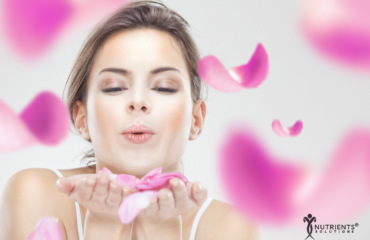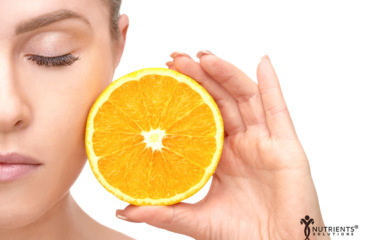Wellness Demystified: We Can Help You Discover Optimum Health
The Face Behind the Mask

Your skin needs regular care to keep it in peak condition. Using a face pack regularly will deep cleanse the pores and remove dead skin cells, excess oil, and impurities. Using one on a regular basis will significantly improve the appearance and quality of your skin.
Having clear, healthy, and youthful looking skin is important to a lot of people, which is probably why so many of us spend a great deal of time and money trying to improve the way we look. Your face is one of the most sensitive and delicate areas of the body and must, therefore, be treated with the utmost care. Although there are numerous products on the market for cleansing, toning, and moisturizing the skin, the benefits of using a face pack can often be overlooked.
Face packs can benefit the skin in numerous ways, including deep cleansing the pores and removing dead skin cells, excess oil, and impurities. At the same time, they nourish this important area of the body, leaving the skin’s pores feeling tighter and smoother. However, before using any type of face pack, you should determine your skin type to ensure you get maximum benefit from the mask.
Determining your skin type
Skin type can vary from person to person, but your skin will generally fall into one of six categories. Learning to understand your skin type and how to manage it will ensure your skin gets the best care.
- Normal skin – The face is neither too oily nor too dry and has an even tone. It contains no open pores, and blemishes and blackheads are uncommon.
- Dry skin – This will feel tight with no oily t-zone – particularly after cleansing. It may also appear dull, with rough, flaky areas accompanied by premature signs of aging.
- Oily skin – The cheeks or entire face will appear oily, accompanied by open pores and a particularly oily t-zone. The skin will tend to suffer from frequent spots and visible blackheads.
- Combination skin – This can be a combination of normal/oily skin or normal/dry skin. Combination skin may have an oily t-zone and dry cheeks or be excessively dry on the cheeks with a minimal oily t-zone. Unlike other skin types, it requires a product that is flexible enough to work on the different areas.
- Problem skin – This skin type is similar to oily skin but much worse. The skin appears oily all the time, even soon after cleansing. It tends to produce frequent spots and has visible blackheads and open pores.
- Sensitive skin – This skin type reacts badly to skin products and environmental factors. It may become increasingly irritated, causing rashes, redness, or itching. Any new facial products will need to be tested in a small area first, before being used over the entire face.
Choosing a mask
Once you have determined your skin type, you can then decide what type of mask suits you the best. There are five different types of masks to choose from:
- Moisturizing masks – These are perfect if you suffer from dry skin, as they work as an intense moisturizer. This type of mask will help to improve moisture levels in the skin.
- Exfoliating masks – This type of mask will suit any skin type. It will help to remove dead skin cells by deep cleansing and exfoliating the skin.
- Mud and clay masks – If your skin is prone to breakouts and blackheads, then this mask will be extremely beneficial. If used regularly, it will significantly improve the condition of the skin by absorbing excess oil and impurities.
- Peel-off masks – These masks peel off, instead of having to be rinsed off, and come in either a gel or a liquid. They cleanse the pores and nourish the skin and will suit any skin type.
- Gel masks – These masks offer a soothing and cooling action and are particularly good for oily and sensitive skins.
How to apply a face pack
- Before applying a face pack, you must make sure your face is thoroughly clean and remove all make-up – if your skin is particularly dry, you can try using a little moisturizer before applying the mask.
- Always apply the pack with your fingertips, taking care around the delicate eye and lip areas – otherwise, these areas can become damaged as the pack dries and tightens on the skin.
- Once applied, relax and try not to talk or laugh. At this point, you can also place cucumber slices, cold tea bags, or crushed mint over the eyes to relieve stress and tired-looking eyes.
- Once you have removed the mask, do not apply any make-up for at least two to three hours.
- Each time you use a mask, you will immediately feel the benefit. However, you will need to perform this treatment at least two or three times a week for maximum results, as the effects of a mask are only temporary.
Although there are many face packs available on the market, you can whip up a few of your own at home – again, make sure they are suitable for your skin type. Here are a few ideas you might like to try:
Normal skin
- Mix a banana and a spoonful of honey into a pulp and apply to the face. Rinse off after about ten to fifteen minutes.
- Mix a teaspoon of cream and a spoonful of orange juice and apply to the face. Rinse off after about fifteen minutes.
Dry skin
- Mix two tablespoons of honey and two tablespoons of milk. Then smooth over the face and rinse off after about ten minutes.
- Make a paste with mashed apricots and warm olive oil. Apply to the face and rinse off after about ten minutes.
Oily
- Mix one egg white with one tablespoon of honey and apply to the face. Then wash off after about ten minutes.
- Mash up a tomato and apply evenly over the face. Rinse off with warm water after fifteen to twenty minutes.
- Mix one tablespoon of fullers earth with a little water, add one teaspoon of rose water and apply to the face. Then wash off after fifteen to twenty minutes.
Combination skin
- Mash one plum and one peach together, and then add two teaspoons of honey and one egg. Apply to the face and wash off after twenty to thirty minutes.
Sensitive skin
- Mix cucumber and yogurt together and apply to the skin. Then rinse off after fifteen to twenty minutes.
Masks made from fruits such as strawberries can help to reduce sensitivity. Meanwhile, masks comprised of products known to have anti-inflammatory properties, like green tea, can help remove decrease puffiness and the appearance of dark circles.
There are numerous other ideas available for homemade face masks, and the benefit is that they work just as well as many of the products you can buy on the market, but they won’t cost as much. Beautiful skin needs attention to keep it that way, so start experimenting to find out which masks suit you the best.


© 2019 Nutrients Solutions, LLC. All rights reserved. Disclaimer: The information provided is for educational purposes only and does not constitute medical advice. Always seek the advice of your physician or qualified healthcare provider with any questions or concerns about your health. Check with your doctor before beginning any exercise program. Never disregard or delay seeking medical advice because of something you have heard or read in this article or the internet.












